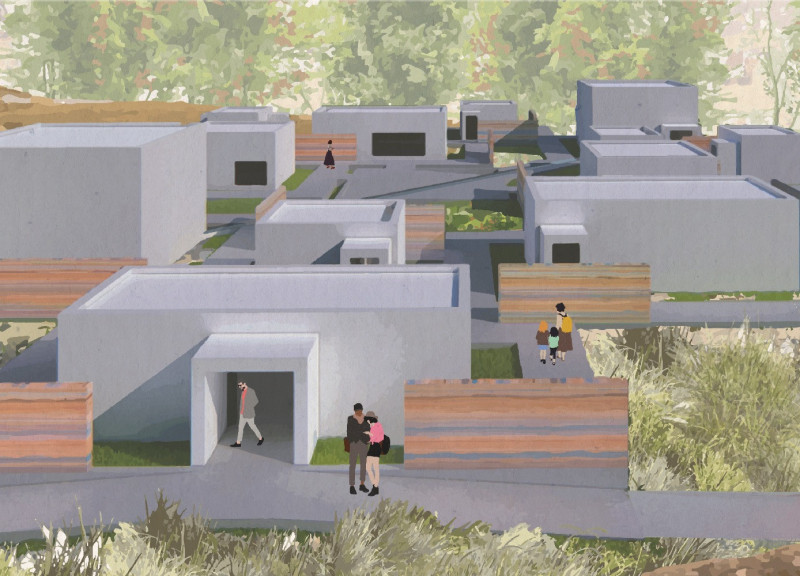5 key facts about this project
The primary function of the Pavilion is to provide a platform for exhibitions, performances, and workshops that delve into the human experience. Visitors are treated to a narrative journey that unfolds within its walls, guiding them through the milestones of human history and prompting them to consider the shared values that unite us across time and space. This space is not merely an exhibition venue; it aims to inspire dialogue and facilitate a deeper understanding of what it means to be human.
The design of the Pavilion is organized around a central water feature, which acts as a focal point for the entire project. This water element not only enhances the aesthetic appeal of the Pavilion but also serves as a metaphor for continuity and the flow of time, reinforcing the thematic concerns of the space. Surrounding this water feature are various functional areas, including exhibition halls, a café, performance areas, and multi-purpose workshops. Each area is purposefully designed to promote interaction and engagement among visitors while encouraging them to reflect on humanity's past and future.
One of the unique design approaches of this project is the integration of diverse materials, each chosen for its ability to convey deeper meanings associated with humanity. Concrete serves as the primary material for the structural elements, symbolizing strength and permanence. This choice reflects humanity's resilience in the face of challenges. In contrast, wood is utilized extensively in interior spaces, bringing warmth and organic texture that invites visitors to connect with the environment on a sensory level. Furthermore, the extensive use of glass promotes transparency, allowing natural light to flood into the exhibition spaces, fostering a sense of openness and approachability.
The layout of the Pavilion emphasizes fluidity between indoor and outdoor experiences. The exhibition spaces are designed to encourage smooth transitions, allowing visitors to move seamlessly from one area to another, mimicking the journey through history that the Pavilion aims to depict. Outdoor pathways lead to gathering spaces, reinforcing the idea of community and shared experiences.
Moreover, the Pavilion incorporates interactive elements that enrich the visitor experience. The waterway not only serves as a chronological storytelling device but also invites people to engage physically with the space. Visitors can walk alongside the water, creating a kinesthetic relationship with the narrative being presented. This engagement underscores the Pavilion’s role as a center for learning and community involvement.
In summary, the Pavilion of Humanity stands as a testament to the power of architecture in shaping our understanding of complex themes such as identity and culture. Through careful consideration of materials, thoughtful spatial organization, and innovative design approaches, the project invites contemplation and encourages meaningful interactions among its visitors. Those interested in the intricacies of this architectural endeavor are encouraged to explore the project presentation further. A detailed examination of the architectural plans, sections, and designs will provide deeper insights into the thoughtful ideas that have shaped this significant space.























